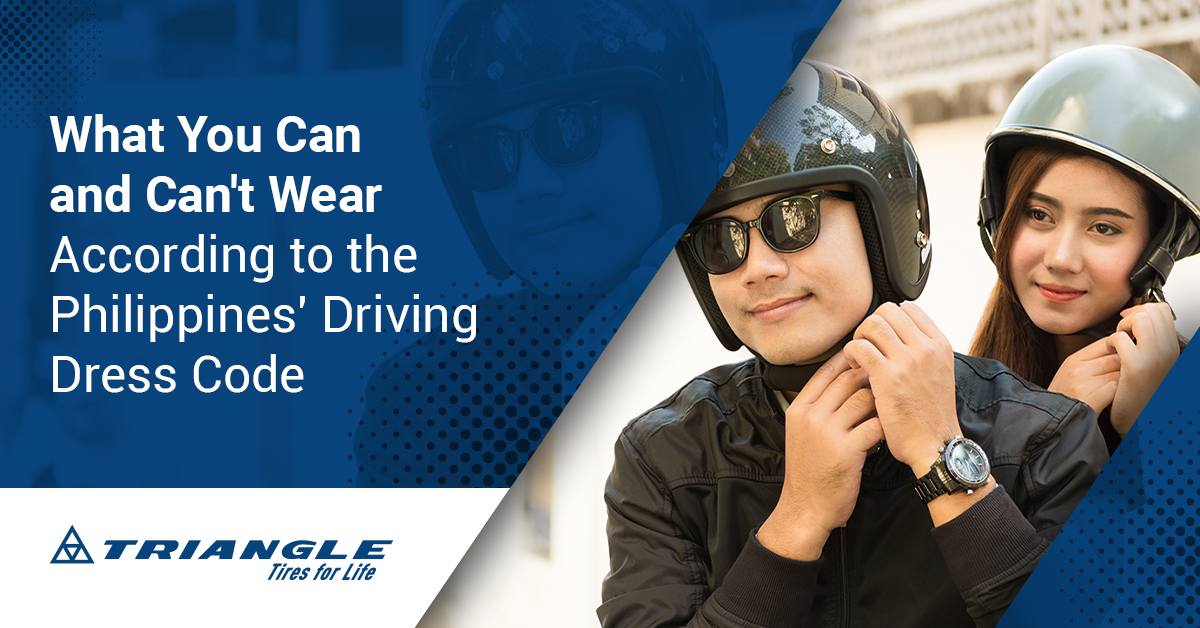
Driving through the busy streets of the country demands more than just mastering traffic rules and proper vehicle maintenance. It also requires an intuitive grasp of the appropriate attire for motorists. What you wear behind the wheel holds more significance than meets the eye.
With its unique tropical climate and rich cultural influences, the Philippines places considerable importance on driving attire. More than just a fashion statement, your wardrobe choices ensure a secure and comfortable journey. Read below to learn about the proper attire for motorcycle riding in the Philippines for everyone’s safety.
Driving Dress Code in the Philippines
Before you drive on the streets, you must first understand the intricacies of the Philippine driving dress code. Wearing the proper attire for motorcycle riding and other vehicles in the Philippines is a driving habit you should always observe on your trips.
The dress code is more than just a guideline of what to wear when traveling. It stems from the Land Transportation Office (LTO) Administrative Order No. AHS-2008-015 of 2008—meaning the dress code has lawful backing.
This comprehensive directive outlines the proper outfit when riding your vehicle. It emphasizes the importance of wearing the appropriate attire—whether you’re the driver or the passenger. The implementation of these guidelines underscores the commitment to road safety and the well-being of all riders, including you.
The Proper Attire for Motorcycle Riding in the Philippines
Responsible motorcycle riding in the Philippines goes hand in hand with adhering to the driving dress code. Each facet of the dress code ensures the safety and well-being of riders and passengers alike. With that, take note of the proper attire for motorcycle riding according to the driving dress code in the Philippines.
1. Headgear
The helmet is a non-negotiable aspect of motorcycle safety. It is your first line of defense during your motorcycle ride—whether you’re controlling the wheels or just accompanying the driver. Your helmet must have the Philippine Standard (PS) or Import Commodity Clearance (ICC) mark, certifying its compliance with safety standards.
Moreover, the Helmet Act of 2009 mandates wearing helmets on both long and short trips. However, the dress code prohibits novelty helmets, like those for bicycles and skateboards, hard hats, and substandard or non-certified ones. Opting not to wear helmets is also in violation of the LTO administrative order.
Non-compliance will result in fines and penalties, as outlined below.
- For no helmets:
- 1st offense: Php 1,500
- 2nd offense: Php 3,000
- 3rd offense: Php 5,000
- 4th offense and onwards: Php 10,000 and confiscation of driver’s license
- For using substandard helmets without the proper markings:
- 1st offense: Php 3,000
- Subsequent offenses: Php 5,000
2. Protective hand accessories
When you think of the proper attire for motorcycle riding in the Philippines, gloves are the next accessory that typically comes to mind.
While optional, as stated in the driving dress code, gloves are an essential gear to wear when out and about on your motorcycle. These accessories help protect your hands from serious injury and offer added grip strength for better handlebar control.
Gloves can come in different materials, such as leather, fabric, mesh, or a combination of these types. They can also have protective pads or armor to enhance their safeguarding capabilities.
3. Torso
Much like the gloves, protective accessories for the torso are not required but highly encouraged. Long-sleeved shirts or jackets specifically made for motorists are essential to the proper attire for motorcycle riding in the Philippines. These items can keep your skin safe from the elements during your travels.
Plus, your jacket can keep you warm and comfortable as the wind picks up when riding at high speeds. When choosing protective torso garments, it’s ideal to wear jackets with reflective or light colors for enhanced visibility. This jacket design becomes particularly crucial during nighttime rides or when increased visibility is necessary.
4. Footwear
This clothing item is often an overlooked aspect of motorcycle attire among riders. However, it’s one of the most crucial components to remember since non-compliance can result in fines and penalties. As the LTO administrative order states, you (regardless of whether you are the driver or passenger) must wear closed shoes—typically those that cover the entire foot, including the top and the heel.
You cannot wear flip-flops, sandals, slippers, and other open-toed shoes when riding a motorcycle. This specification protects the feet and ankles from potential injuries, especially when road conditions have hazardous debris.
Failure to comply may result in the following fines and penalties:
- 1st offense: Php 500
- 2nd offense: Php 750
- 3rd and subsequent offenses: Php 1,000 and confiscation of driver’s license
Be a Safe and Responsible Motorist
Being a responsible motorist requires more than just mastering the rules of the road. It’s also about knowing the proper attire for a safe ride. Understanding and adhering to the LTO regulations on the Philippine driving dress code ensures compliance and creates safer roads for everyone.
Above all else, ensuring your motorcycle’s top performance is a must when going on rides, and well-maintained tires are essential for a safe driving experience. For quality tires, Triangle Tires has got your back. We have a wide array of tires—from passenger cars and light trucks to heavy equipment vehicles—available for delivery at an affordable price.
Browse our tire catalog or contact us for your tire needs.